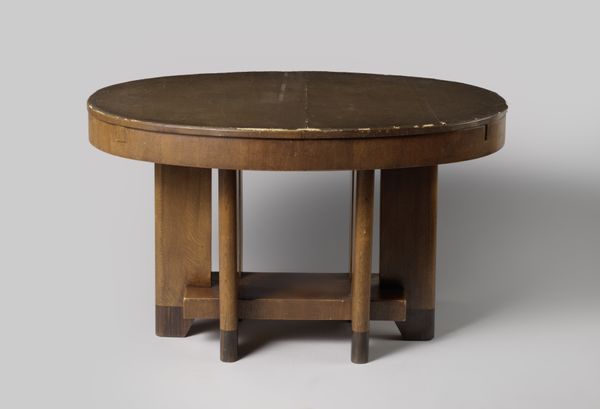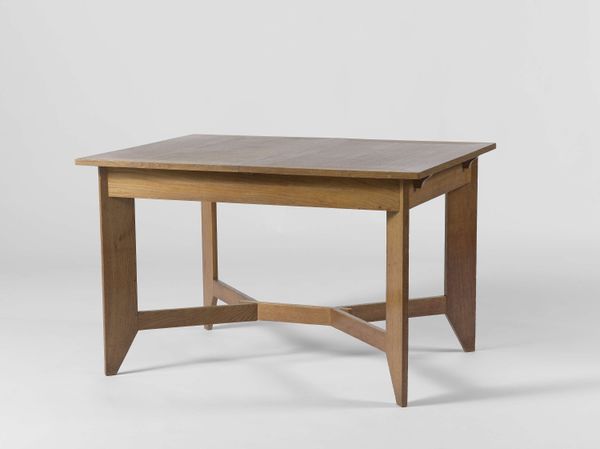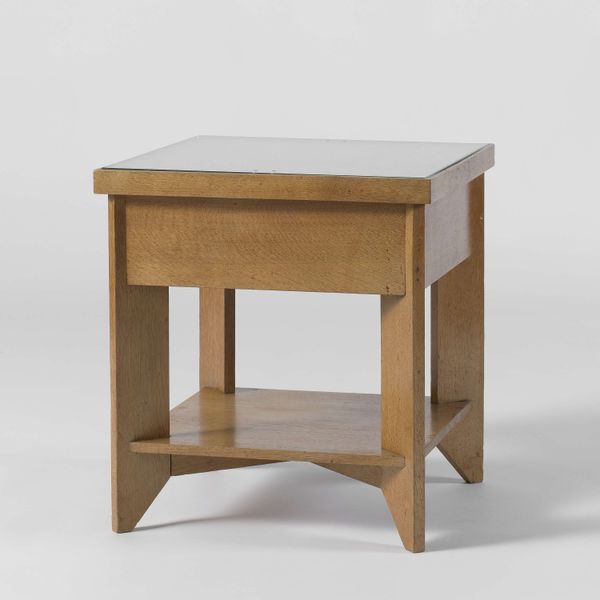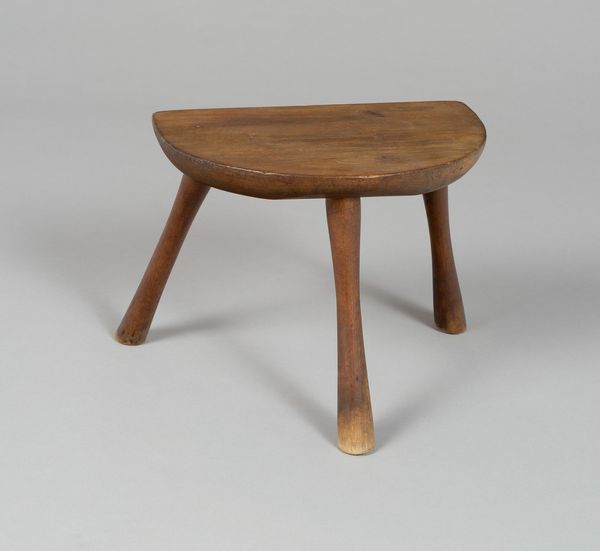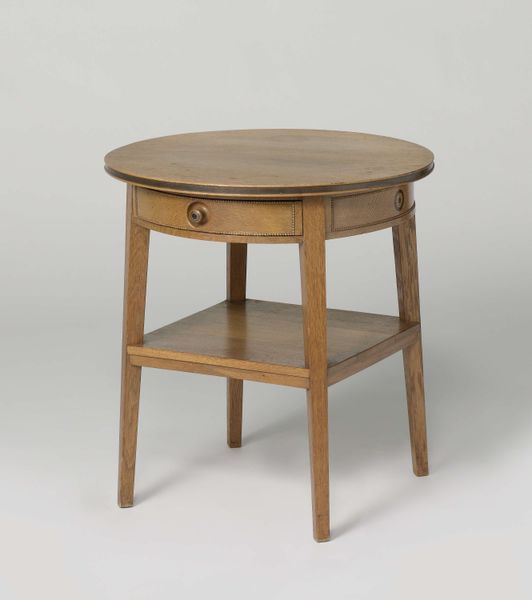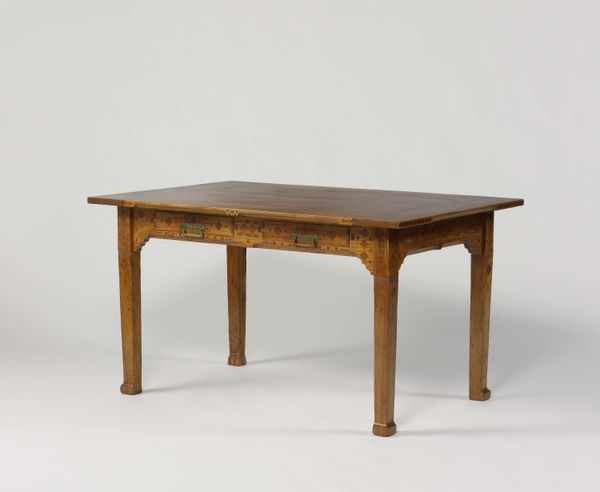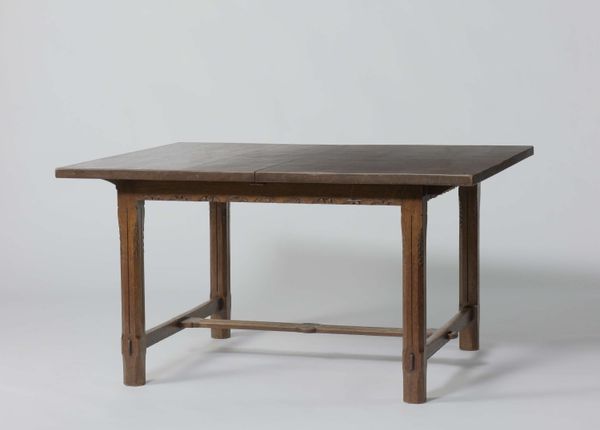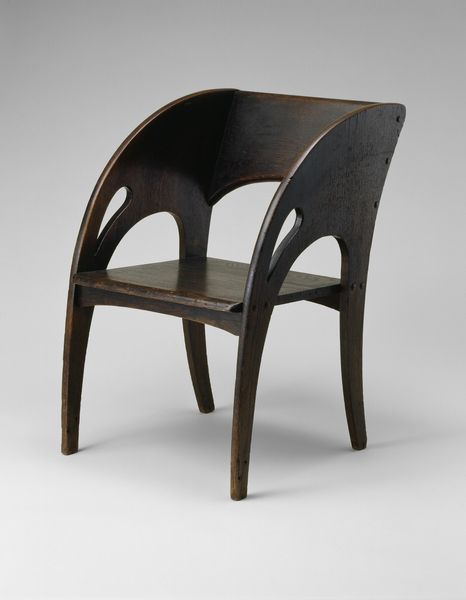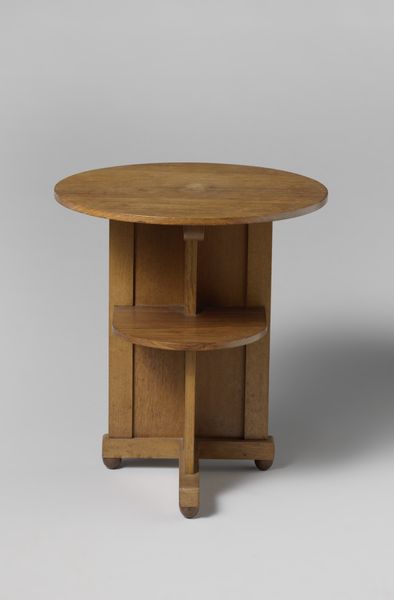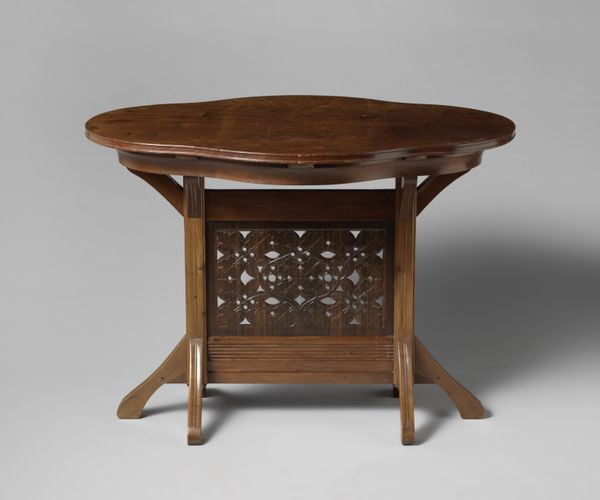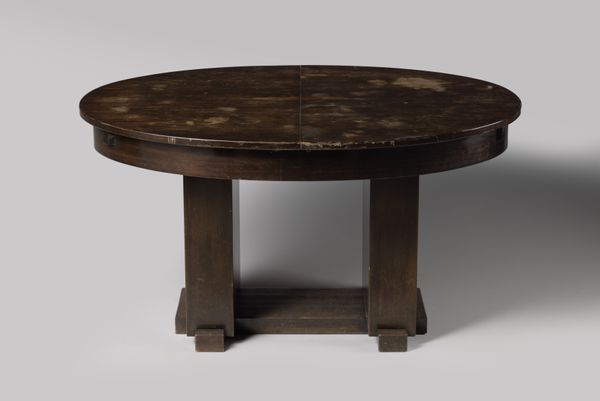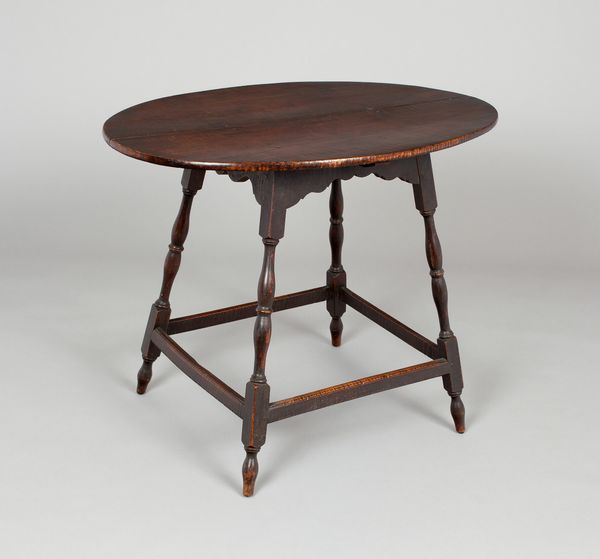
Tafel met een achthoekig tafelblad en rustend op vier schuingeplaatste poten c. 1910
0:00
0:00
wood
#
arts-&-crafts-movement
#
furniture
#
wood
Dimensions: height 65.5 cm, width 80.0 cm, depth 80.0 cm, weight 16 kg
Copyright: Rijks Museum: Open Domain
This table with an octagonal top, resting on four slanted legs, was crafted by Jacob Pieter van den Bosch. The octagon, a shape with eight sides, has long been a symbol of regeneration and rebirth. We see this form echoed throughout history, from baptismal fonts in early Christian churches, symbolizing spiritual renewal, to the Dome of the Rock in Jerusalem, where the octagon represents a bridge between the earthly and divine realms. Over time, its presence has shifted from sacred architecture to more secular designs, yet it still carries a subtle echo of its original, spiritual significance. Consider how these shapes interact with our subconscious. The eight sides may subtly evoke feelings of balance and harmony, engaging viewers on a deep level. Thus, the humble table becomes a vessel carrying symbols and their emotional echoes, revealing how cultural memory and subconscious processes influence the forms we create. The shape resurfaces, evolves, and takes on new meanings.
Comments
No comments
Be the first to comment and join the conversation on the ultimate creative platform.
